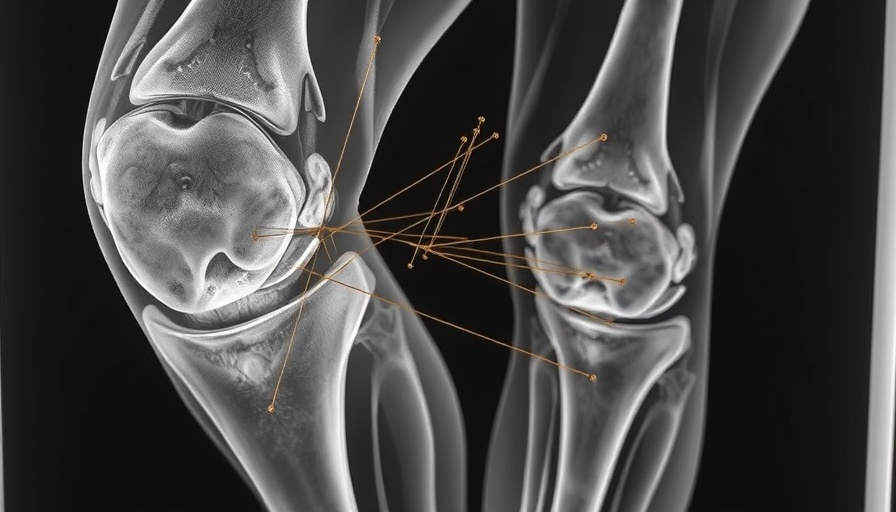
Understanding the Diagnostic Dilemma of Joint Pain
A 65-year-old woman from South Korea recently faced a medical conundrum that highlights the complexities of diagnosing joint pain. After a history of osteoarthritis in her knee, she sought various treatments that included painkillers and steroid injections, none of which provided relief. Consequently, she turned to alternative therapies, including weekly acupuncture sessions. Although acupuncture is known for its pain-relieving properties, this particular case took an unexpected turn when an X-ray revealed a shocking discovery: tiny golden threads embedded in her knee.
What are Gold-Thread Acupuncture Treatments?
The tiny flecks visible in the woman's knee joint were identified as gold threads, intentionally inserted during her acupuncture treatments. Practiced primarily in Asia for conditions like osteoarthritis and rheumatoid arthritis, gold-thread acupuncture aims to provide lasting stimulation to the affected areas. However, as interesting as it sounds, this modality remains contentious. Despite its popularity, evidence supporting the efficacy of gold-thread acupuncture is largely absent. In some instances, reliance on such treatments has been correlated with worsened arthritis outcomes due to delays in seeking conventional medical care.
The Risks of Such Treatments
While acupuncture can offer relief for some, gold-thread insertion can come with potential complications. In the woman's case, although her knee pain was attributed to a non-traditional treatment, the presence of these threads could have implications for her health. Past reports indicate that leaving these threads in situ may lead to complications such as cyst formation or infection from migrated threads, as experienced by other patients.
Lessons from Similar Cases
A comparison can be drawn from another case involving a 58-year-old South Korean woman who pursued gold-thread acupuncture for rheumatoid arthritis in her wrists. Tragically, her condition deteriorated significantly, leading to a delay in receiving appropriate anti-rheumatic medicines. Cases like these bring to light the potential dangers of foregoing traditional treatments in favor of alternative methods. They reinforce that while an integrative approach has merit, it must not replace conventional medical care entirely.
Global Perspectives on Alternative Therapies
Alternative medicine, such as acupuncture, often garners mixed responses across different cultures. In the West, skepticism surrounding such practices can contrast sharply with their acceptance in Eastern cultures. Medical professionals urge patients to remain cautious and consider long-term implications when opting for treatments that lack solid backing from clinical studies. The balance between seeking relief through alternative means and holding onto essential therapies that have proven efficacy is pivotal in patient health outcomes.
The Continuous Debate: Alternative versus Conventional Medicine
This case shines a light on an ongoing debate within healthcare: the validity of alternative treatments when juxtaposed with conventional medicine. Healthcare providers advocate for evidence-based treatments, and in the context of joint pain, traditional therapies remain the gold standard. Engaging in conversation with healthcare professionals about the potential role of alternative practices like acupuncture, rather than solely relying on them, ensures a well-rounded approach to health.
The discussion surrounding alternative therapies, especially in the context of chronic diseases, is essential. It compels us to scrutinize the balance of medical practices while ensuring informed patient choices. As the discourse evolves, it is vital for patients and providers to work together to assess the risks and benefits of all treatment options.
 Add Row
Add Row  Add
Add 




Write A Comment